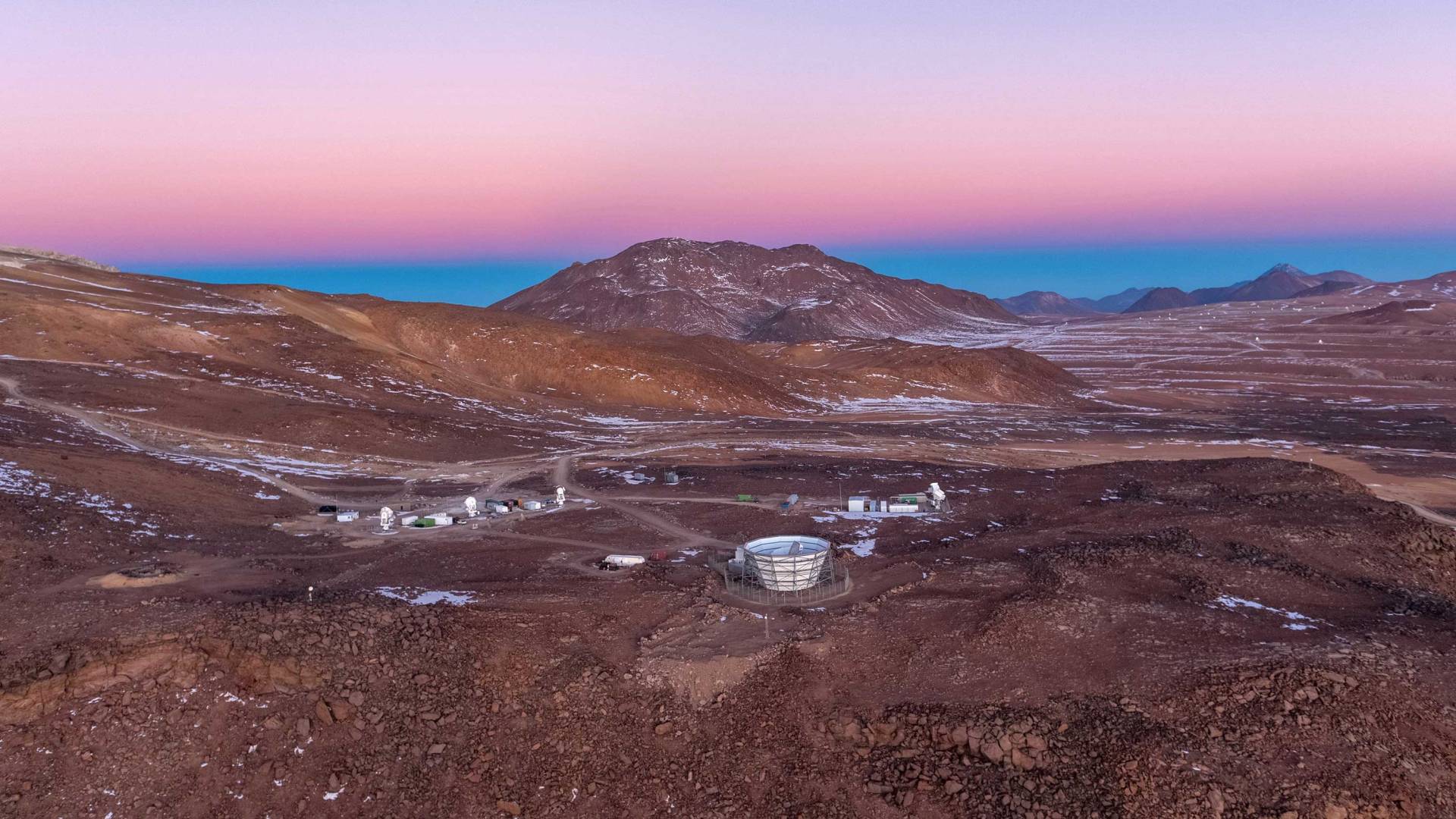Simons Observatory is located in Chile’s Atacama Desert, at 17,000 feet elevation. The Observatory is being built on the plateau visible at the right of this image; the telescope in the center is the Atacama Cosmology Telescope.
The National Science Foundation has awarded a $52.66 million grant to fund a major infrastructure upgrade to the Simons Observatory in the Atacama Desert of Chile. Upgrades are expected to take about five years; the resulting facility will be known as the Advanced Simons Observatory (ASO).
ASO’s principal investigator is Mark Devlin of the University of Pennsylvania, a 1994-1995 Princeton University postdoc, and the three co-investigators are Jo Dunkley and Suzanne Staggs, both Princeton professors, and Jeffrey J. McMahon, a 2006 Ph.D. graduate of Princeton who is now a professor at the University of Chicago. Other collaborators are located at other institutions in the U.S. and abroad.
“I can’t overstate the importance of this enormous investment from the NSF for the scientific reach of the observatory,” said Staggs, Princeton’s Henry DeWolf Smyth Professor of Physics, who received word of the award while in Chile overseeing the work. “It represents the government going ‘all in’ on a project that had previously been privately funded.”
Perched in Chile’s high desert at an altitude of 17,000 feet, the Simons Observatory, scheduled to begin observations in the next few months, will soon provide scientists an unprecedented glimpse into the nature of fundamental physical processes that have governed the origin and evolution of the universe since the dawn of time itself.
The existing project consists of three small aperture telescopes (SATs, each about 1½ feet across) and one large aperture telescope (LAT, about 20 feet across), and is the successor to the Atacama Cosmology Telescope project at the same site. Some 300 scientists, engineers and researchers from more than 35 institutions around the world contribute to the project, making it one of the world’s largest cosmology collaborations.
The ASO upgrade will provide a better view of the cosmic microwave background (CMB), as well as opening a new window into the time domain of the universe, allowing researchers to look for stellar flares, gamma ray bursts, and stars being “eaten” by black holes. In addition, ASO will improve magnetic field measurement, allowing scientists to better understand how stars are formed, and allow for more sensitive mapping of stellar feedback, which will create a clearer picture of galaxy evolution.
“This is just so exciting!” said Dunkley, a professor of physics and astrophysical sciences. “ASO will give us a new look at everything — the CMB, dark matter, galaxy evolution — throughout the whole universe.”

Princeton physicists and astrophysicists on the Simons Observatory team gather in front of Jadwin Hall.
The mission of ASO, said Staggs, builds on Princeton’s long history of advancing the understanding of the CMB through the work of researchers such as James Peebles, the 2019 Nobel Laureate in Physics and Princeton’s Albert Einstein Professor of Science, Emeritus, and the late David Wilkinson and Robert Dicke, both former Princeton physics professors.
Lyman Page, the James S. McDonnell Distinguished University Professor in Physics, will also play a key role in ASO, as will Simons Foundation President David Spergel, Princeton’s Charles A. Young Professor of Astronomy on the Class of 1897 Foundation, Emeritus.
For ASO, Staggs oversees the hardware for doubling the LAT’s mapping speed, including doubling the numbers of detectors in its camera, their associated lenses and other optical elements.
Dunkley will oversee the data pipeline, which Staggs described as “utterly essential to the project,” because it involves “everything that gets the data ready so that we can extract its science, including making gorgeous maps of the CMB and its gravitational lensing.”
Using Princeton supercomputing facilities, the ASO team will process eight times the data volume in one quarter the time achieved for current data and provide analysis tools and training events to make legacy maps accessible to the community.
On the sustainability front, ASO will establish a new paradigm for green observatories at remote sites, said Devlin. As power lines do not currently reach up to the observatory’s extremely remote location, the telescopes have depended on diesel generators. The NSF award will fund a massive photovoltaic array to replace 70 percent of the power at the site with solar energy, saving up to 2 million kilograms of carbon dioxide emissions per year.
“The NSF AWARD for the Advanced Simons Observatory will provide resources to make the Simons Observatory the most capable instrument studying the millimeter-wave sky for the coming decade,” said Devlin. “The results will have far-reaching impacts across multiple astronomical areas from our solar system, all the way to the beginning of the universe. I cannot imagine a more exciting area for discovery.”
While ASO is now funded by a Mid-Scale Research Infrastructure-2 grant from the National Science Foundation, the Simons Observatory program receives funding from the Simons Foundation (Award #457687, B.K) and the Heising-Simons Foundation, with additional contributions from Princeton University, the University of Pennsylvania, the University of Chicago, the University of California-San Diego, the University of California-Berkeley with the Lawrence Berkeley National Laboratory, and a number of smaller partners. The observatory is located in Chile’s Atacama Desert, under the auspices of Chile’s Agencia Nacional de Investigación y Desarrollo and the Parque Astronómico Atacama.
The University of Pennsylvania contributed to this story.






